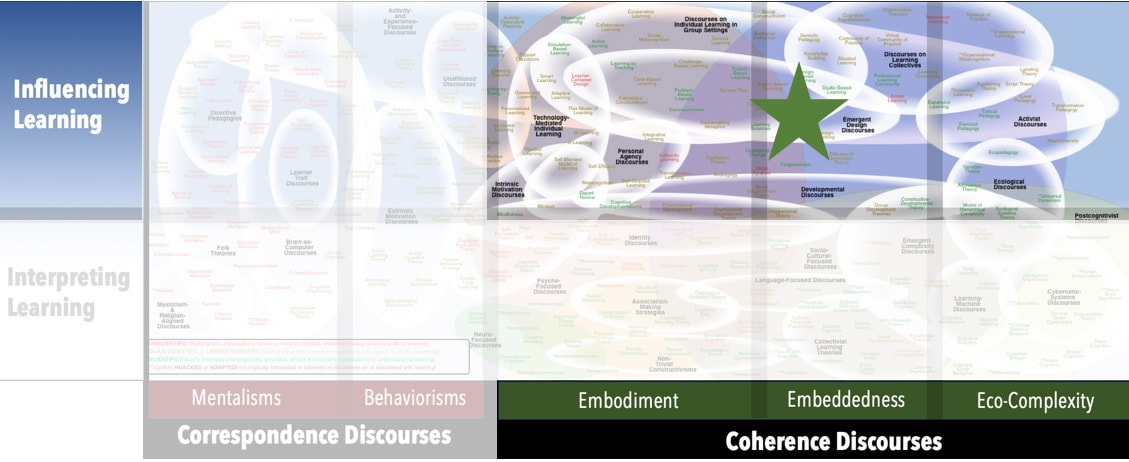AKA
Theory of Affordances
Focus
Possibilities for action and sense-making that arise for an individual in an environmentPrincipal Metaphors
- Knowledge is … scope of possible actions and interpretations (in a specific setting)
- Knowing is … coherently interpreting; appropriately acting
- Learner is … an interactor (individual-in-environment)
- Learning is … expanding possibility
- Teaching is … designing (affordances), occasioning
Originated
1980sSynopsis
Viewing the individual-in-environment in systemic terms, Affordance Theory attends to the range of possibilities that arise when an individual (with specific intentions and needs, and who is oriented by a personal history) interacts with an environment (with specific structures that help to channel perception and that enable some actions while constraining others). More concisely, Affordance Theory is concerned with “affordances”:- Affordances (Effectivities) – possibilities for action/interpretation that an environment offers to the individual
- Actualized Affordance – an affordance that has been fully realized or utilized in a particular context
- False Affordance (William Gaver, 1990s) – a placebo or placebo-like option that does not have a material function
- Hidden Affordance (William Gaver, 1990s) – a genuine possibility for action that is not perceived by the actor
- Perceptible Affordance (Perceived Affordance) (William Gaver, 1990s) – a genuine possibility for action that is perceived by the actor. Perceptible Affordances typically lead to productive links between perception and action.
- Social Affordance (Donald Norman, 1980s) – those affordances associated with social actions. The construct was developed to refer to human–computer interactions, and it is most often encountered in discussions of sociotechnical applications.
- Usability – effectively, the extent to which a tool or system provides Perceptible Affordances
Commentary
By framing personal action in terms of possibilities presented in and called forth by one’s environment, Affordance Theory offers an alternative to the causal logic that is encountered in much of educational thinking. That is, Affordance Theory acknowledges that what one learns is dependent on, but not determined by the environment. That shift has been taken up by those oriented by Design Thinking and is emerging as a major influence in research into technology-mediated learning.Authors and/or Prominent Influences
James J. GibsonStatus as a Theory of Learning
Affordance Theory aligns with Eco-Complexity Discourses, but it is not a theory of learning.Status as a Theory of Teaching
Affordance Theory can be construed as a theory of teaching, albeit a version in which teaching is about influencing rather than causing, conveying, or directing.Status as a Scientific Theory
Affordance Theory meets our criteria for a scientific theory.Subdiscourses:
- Actualized Affordance
- Affordances (Effectivities)
- False Affordance
- Hidden Affordance
- Perceptible Affordance (Perceived Affordance)
- Social Affordance
- Usability
Map Location

Please cite this article as:
Davis, B., & Francis, K. (2024). “Affordance Theory” in Discourses on Learning in Education. https://learningdiscourses.com.
⇦ Back to Map
⇦ Back to List
